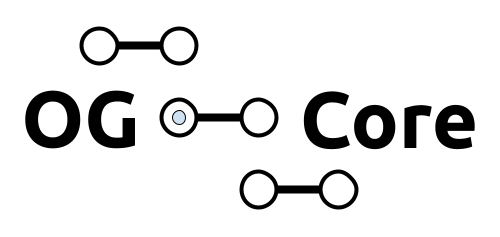References#
Paul S. Armington. A theory of demand for products distinguished by place of production. Staff Papers, International Monetary Fund, 16(1):159–178, March 1969.
Alan J. Auerbach and Laurence J. Kotlikoff. An examination of empirical tests of Social Security and savings. In Elhanan Helpman, Assaf Razin, and Efraim Sadka, editors, Social Policy Evaluation: An Economic Perspective, chapter Chap. 8, pages pp. 161–179. Academic Press, 1983.
Alan J. Auerbach and Laurence J. Kotlikoff. Investment versus savings incentives: the size of the bang for the buck and the potential for self-financing business tax cuts. In Lawrence. H. Meyer, editor, The Economic Consequences of Government Deficits, Economic Policy Conference Series, chapter Chap. 4, pages pp. 121–149. Kluwer-Nijhoff Publishing, 1983.
Alan J. Auerbach and Laurence J. Kotlikoff. National savings, economic welfare, and the structure of taxation. In Martin Feldstein, editor, Behavioral Simulation Methods in Tax Policy Analysis, chapter Chap. 13, pages pp. 459–498. University of Chicago Press, 1983.
Alan J. Auerbach and Laurence J. Kotlikoff. Simulating alternative Social Security responses to the demographic transition. National Tax Journal, 38(2):153–168, June 1985.
Alan J. Auerbach and Laurence J. Kotlikoff. Dynamic Fiscal Policy. Cambridge University Press, 1987.
Alan J. Auerbach, Laurence J. Kotlikoff, and Jonathan Skinner. The efficiency gains from dynamic tax reform. NBER Working Paper 819, National Bureau of Economic Research, December 1981.
Alan J. Auerbach, Laurence J. Kotlikoff, and Jonathan Skinner. The efficiency gains from dynamic tax reform. International Economic Review, 24(1):81–100, February 1983.
Seth G. Benzell, Laurence J. Kotlikoff, and Guillermo LaGarda. Simulating business cash flow taxation: an illustration based on the “Better Way” corporate tax reform. NBER Working Paper 23675, National Bureau of Economic Research, August 2017.
Christopher Carroll, Jiri Slacalek, Kiichi Tokuoka, and Matthew N. White. The distribution of wealth and the marginal propensity to consume. Quantitative Economics, 8(3):977–1020, November 2017.
Jason DeBacker, Richard W. Evans, and Kerk L. Phillips. Integrating microsimulation models of tax policy into a DGE macroeconomic model. Public Finance Review, 47(2):207–275, March 2019.
Paul H. C. Eilers. A perfect smoother. Anals of Chemistry, 75(14):3631–3636, July 2003.
Paul H. C. Eilers. Unimodal smoothing. Joural of Chemometrics, 19(?):317–328, ? 2005.
Paul H. C. Eilers and Brian D. Marx. Flexible smoothing with b-splines and penalties. Statistical Science, 11(2):89–121, May 1996.
Richard W. Evans and Kerk L. Phillips. OLG life cycle model transition paths: alternate model forecast method. Computational Economics, 43(1):105–131, January 2014.
Richard W. Evans and Kerk L. Phillips. Advantages of an ellipse when modeling leisure utility. Computational Economics, 51(3):513–533, March 2017.
Roy C. Geary. A note on `a constant-utility index of the cost of living'. Review of Economics Studies, 18(1):65–66, 1950-51.
Miguel Gouveia and Robert P. Strauss. Effective federal individual tax functions: an exploratory empirical analysis. National Tax Journal, 47(2):317–39, June 1994.
Jonathan Heathcote, Kjetil Storesletten, and Giovanni L. Violante. Optimal Tax Progressivity: An Analytical Framework. The Quarterly Journal of Economics, 132(4):1693–1754, 2017. URL: https://ideas.repec.org/a/oup/qjecon/v132y2017i4p1693-1754..html, doi:.
Erik Hurst, Geng Li, and Benjamin Pugsley. Are household surveys like tax forms? evidence from income underreporting of the self-employed. The Review of Economics and Statistics, 96(1):19–33, 2014. URL: https://EconPapers.repec.org/RePEc:tpr:restat:v:96:y:2014:i:1:p:19-33.
Rachel Moore and Brandon Pecoraro. Quantitative analysis of a wealth tax in the united states: exclusions, evasion, and expenditures. MPRA Paper 109120, University Library of Munich, Germany, https://ideas.repec.org/p/pra/mprapa/109120.html, 2021.
Shinichi Nishiyama. Fiscal policy effects in a heterogeneous-agent OLG economy with an aging population. Journal of Economic Dynamics and Control, 61:114–132, December 2015.
Shinichi Nishiyama and Kent Smetters. Does Social Security privatization produce efficiency gains? Quarterly Journal of Economics, 122(4):1677–1719, November 2007.
William B. Peterman. Reconciling micro and macro estimates of the Frisch labor supply elasticity. Economic Inquiry, 54(1):100–120, January 2016.
Robert M. Solow. A contribution to the theory of economic growth. Quarterly Journal of Economics, 70(1):65–94, February 1956.
Nancy L. Stokey, Robert E. Lucas, Jr., and Edward C. Prescott. Recursive Methods in Economic Dynamics. Harvard University Press, 1989.
Richard Stone. Linear expenditure systems and demand analysis: an application to the pattern of british demand. The Economic Journal, 64(255):511–527, September 1954.
Kotaro Suzumura. Perron-Frobenius theorem on non-negative square matrices: an elementary proof. Hitotsubashi Journal of Economics, 24:137–141, 1983.
